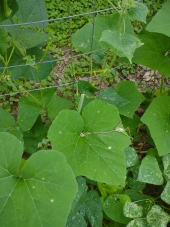
 13
13




![Filename: rock-blocking-post-6.jpg
Description: [Thumbnail for rock-blocking-post-6.jpg]](/t/178097/a/173768/rock-blocking-post-6.jpg)
![Filename: never-ending-rock.jpg
Description: [Thumbnail for never-ending-rock.jpg]](/t/178097/a/173769/never-ending-rock.jpg)
![Filename: rain-and-refilling-with-some-wood.jpg
Description: [Thumbnail for rain-and-refilling-with-some-wood.jpg]](/t/178097/a/173771/rain-and-refilling-with-some-wood.jpg)
Visit Redhawk's soil series: https://permies.com/wiki/redhawk-soil
How permies.com works: https://permies.com/wiki/34193/permies-works-links-threads
 10
10




![Filename: hole-filled-7-x-rebar-in-place-wood-support.jpg
Description: [Thumbnail for hole-filled-7-x-rebar-in-place-wood-support.jpg]](/t/178097/a/173772/hole-filled-7-x-rebar-in-place-wood-support.jpg)
![Filename: bamboo-vertical-1.jpg
Description: [Thumbnail for bamboo-vertical-1.jpg]](/t/178097/a/173773/bamboo-vertical-1.jpg)
![Filename: bamboo-vertical-2.jpg
Description: [Thumbnail for bamboo-vertical-2.jpg]](/t/178097/a/173774/bamboo-vertical-2.jpg)
Visit Redhawk's soil series: https://permies.com/wiki/redhawk-soil
How permies.com works: https://permies.com/wiki/34193/permies-works-links-threads
 11
11




![Filename: attempting-wattle.jpg
Description: [Thumbnail for attempting-wattle.jpg]](/t/178097/a/173775/attempting-wattle.jpg)
![Filename: twisting-the-bamboo-around-the-corner.jpg
Description: [Thumbnail for twisting-the-bamboo-around-the-corner.jpg]](/t/178097/a/173776/twisting-the-bamboo-around-the-corner.jpg)
Visit Redhawk's soil series: https://permies.com/wiki/redhawk-soil
How permies.com works: https://permies.com/wiki/34193/permies-works-links-threads
 11
11




![Filename: Uprights-in-place-1.jpg
Description: [Thumbnail for Uprights-in-place-1.jpg]](/t/178097/a/173777/Uprights-in-place-1.jpg)
![Filename: Uprights-in-place-2.jpg
Description: [Thumbnail for Uprights-in-place-2.jpg]](/t/178097/a/173778/Uprights-in-place-2.jpg)
Visit Redhawk's soil series: https://permies.com/wiki/redhawk-soil
How permies.com works: https://permies.com/wiki/34193/permies-works-links-threads
 9
9




![Filename: Gate-tools-and-scraps.jpg
Description: [Thumbnail for Gate-tools-and-scraps.jpg]](/t/178097/a/173779/Gate-tools-and-scraps.jpg)
![Filename: Gate-lower-section-finished.jpg
Description: [Thumbnail for Gate-lower-section-finished.jpg]](/t/178097/a/173780/Gate-lower-section-finished.jpg)
Visit Redhawk's soil series: https://permies.com/wiki/redhawk-soil
How permies.com works: https://permies.com/wiki/34193/permies-works-links-threads
 9
9




![Filename: Gate-very-tricky-diagonal.jpg
Description: [Thumbnail for Gate-very-tricky-diagonal.jpg]](/t/178097/a/173781/Gate-very-tricky-diagonal.jpg)
Visit Redhawk's soil series: https://permies.com/wiki/redhawk-soil
How permies.com works: https://permies.com/wiki/34193/permies-works-links-threads
 6
6




![Filename: Gate-split-and-wove-upper-panel.jpg
Description: [Thumbnail for Gate-split-and-wove-upper-panel.jpg]](/t/178097/a/173782/Gate-split-and-wove-upper-panel.jpg)
Visit Redhawk's soil series: https://permies.com/wiki/redhawk-soil
How permies.com works: https://permies.com/wiki/34193/permies-works-links-threads
 12
12




![Filename: Gate-in-place-rope-hinges-on-rebar-pivot.jpg
Description: [Thumbnail for Gate-in-place-rope-hinges-on-rebar-pivot.jpg]](/t/178097/a/173783/Gate-in-place-rope-hinges-on-rebar-pivot.jpg)
Visit Redhawk's soil series: https://permies.com/wiki/redhawk-soil
How permies.com works: https://permies.com/wiki/34193/permies-works-links-threads
 3
3




 2
2




Jay Angler wrote:Step 3
Having lost so much time due to the "rock problem", I decided to try a different technique for higher up where deer exclusion was the goal. I tied on a horizontal culm at the very top, securing it to each upright.
I then tied pieces of bamboo vertically to the horizontal top bar and half-way down. The bottom end is trapped in the wattle. I needed different numbers of uprights in different sections due to the wonky bamboo verticals. I think it gives it interest, but more important is that I not block all the sun through the fence, but do block the deer!
At this point, I consider the "fence" portion done - next on to building a gate!
Zone 6b, dry, high desert in New Mexico 7500' elevation
have you checked your new USDA Hardiness zone? Check here: https://planthardiness.ars.usda.gov/
 2
2




That sounds like a great way to do it Sandy, although I'd have had to twist it in between the vertical posts (about every 20 inches), then go either side of the vertical and twist some more and so on. I did need the uprights well enough captured that a deer wouldn't decide to push them out of the way to make a large enough gap, so I, in fact did tie each one in place. Next time, I'll try your suggestion, as I think I could make it work securely enough and it sounds, if not actually faster, much less fiddly than what I did. I did say this was a project intended to try a variety of ideas and learn new things!Basically take a string/twine, attach one end say left upright, then twist/twine it loosely together all the way to the right side upright, then when you want to insert an upright you just open up a bit of the twist and insert the upright piece in. Not sure if I am describing it good enough.
There are many different types of bamboo, so there is some variability.How long does the bamboo grow until you can harvest it?
Visit Redhawk's soil series: https://permies.com/wiki/redhawk-soil
How permies.com works: https://permies.com/wiki/34193/permies-works-links-threads
 4
4




Michael's specific post is here: https://permies.com/wiki/170341/Giant-Bamboo-wiki#1347735
 3
3




Jay Angler wrote:I know from past experience that it's *really* important to have a diagonal support that goes from high up on the hinge side, to down lower on the non-hinge side of a gate to stop it drooping over time and loosing "square".
Good point...I must include diagonal support!

|
Let nothing stop you! Not even this tiny ad:
The new permaculture playing cards kickstarter is now live!
https://www.kickstarter.com/projects/paulwheaton/garden-cards
|







